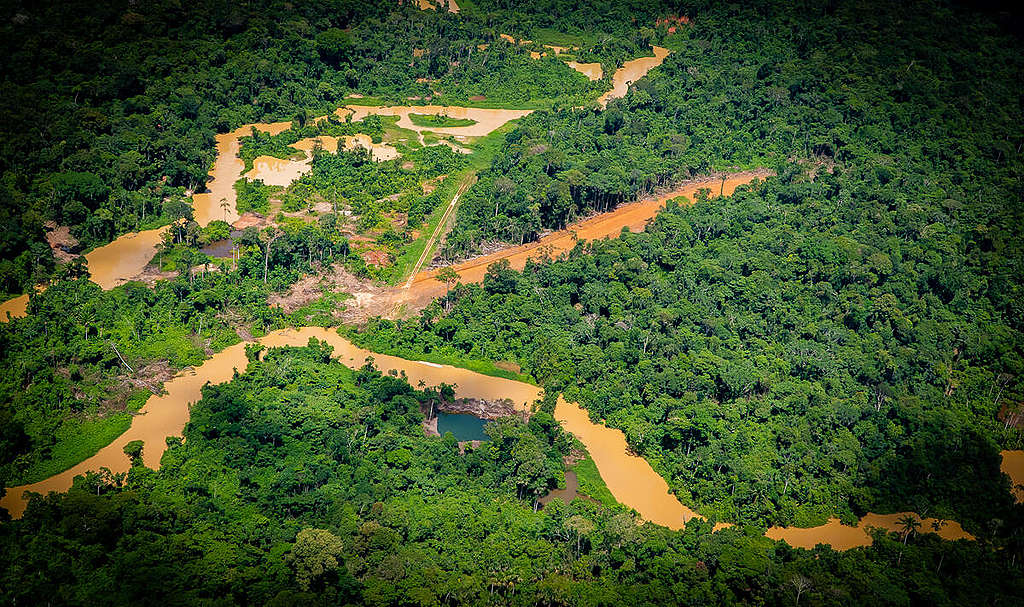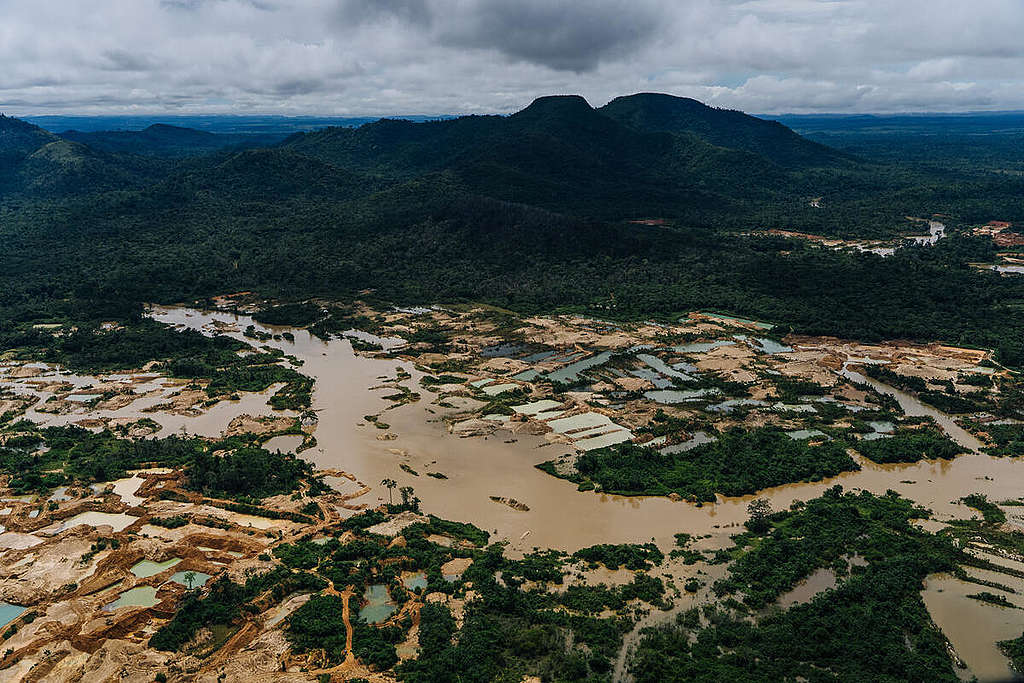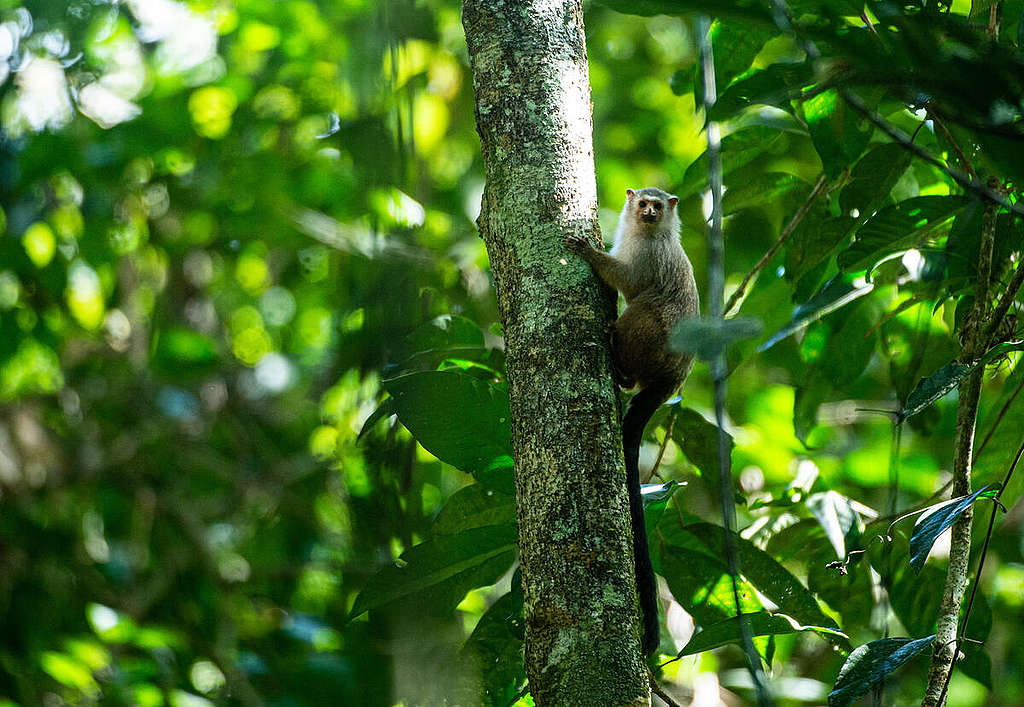The Brazilian Amazon is one of the richest and most diverse biomes in the world, home to millions of species, many of which are still unknown to science. Despite this, the biome has been systematically destroyed by economic activities that are incapable of coexisting with the forest, as is the case with gold mining.
Illegal mining has been expanding in the Amazon for decades, polluting Indigenous Lands and other protected areas, as well as threatening the lives and health of the more than 30 million people who inhabit the region, particularly Indigenous Peoples, through the contamination by mercury and the destruction of the forest.
Illegal mining also comes at the expense of the rivers that cut through the forest and are one of the main sources of food for Indigenous People in the region, and are vital for the reproduction of aquatic life in important areas for the conservation of the Amazon biome.
Here are a few ways how mining has been affecting biodiversity in the Amazon:
Illegal landing strips in the middle of the forest

A report by MapBiomas revealed there are currently 320 airstrips being operated by illegal miners on Indigenous lands. Inside the Yanomami Territory alone, there are 75 airstrips. And to build these, trees and other native vegetation are cut down.
These airstrips are used to bring supplies for the miners to maintain their operations on the forest. The presence of miners on Indigenous Territories poses a major threat to those living in the forest and depend on it for their livelihoods.
Illegal hunting promoted by miners
Gold mining isn't the only way miners destroy the local biodiversity, as the people working on the mines themselves go into the forest to hunt animals for food.
A study by the Amazon Institute for Man and Environment (Imazon) showed that the presence of miners seriously affects the wildlife around the rivers. Miners indiscriminately hunt monkeys, armadillos, capybaras, and many other animals. Several of these species feed on fruits and play important roles in seed dispersal and pollination processes. As the size of a given animal population decreases, these ecological functions are compromised.
The presence of miners hunting for food in Indigenous territories also impacts the lives of the People living on their land, as they have to compete for food, tipping the balance of life in their lands.
Contamination and changes in aquatic ecosystems

In addition to mercury, which in itself already poses a major risk to the health of Indigenous People and to the rivers in the Amazon, illegal mining throws several other sediments into rivers. Equipped with excavators and high-pressure hydraulic systems, the mining activity is, to a large extent, one of the main sources of sediment for the region's rivers. The introduction of hydraulic excavators, which manage to destroy, in one day, what three men would take 40 days to destroy, exponentially expanded the pollution of the rivers in the region.
These sediments reduce the amount of sunlight that enters the water, impacting the life of fish that depend on light to hunt. Several dynamics of predators and prey are modified. Sediment can also affect fish respiratory processes by clogging their gills.
Illegal mining in the Amazon also affects fish species that depend on the headwaters of rivers for their spawning processes, since mining occurs mostly in these places.
Why it is important to protect biodiversity

In 2022, Greenpeace Brazil organized a scientific expedition along the Manicoré River, deep in the Amazon, to study the species located in a national forest that had never been studied before. According to Professor Marta Regina, a botanist from the State University of Amazonas (UEA) "deforestation and mining are destroying species that we haven't even had the chance to meet yet".
During the expedition, Professor Marta reminded us that we still do not know or have studied half of the 5 million km² of the Amazon and, therefore, it is still not possible to state how much biodiversity the Amazon has.
"What we do know is that there is more life under the earth than on its surface", said the botanist, reminding us that soil is home to a magical world of thousands of microorganisms, important for the production of medicines, agriculture and even for the quality and quantity of food we consume. "There is an invisible world under our feet", said Regina.
How biodiverse is the Amazon? We still don't know. What we do know is that we need to stop destroying the forest so that we at least have the chance to get to know the variety of life that exists in the Amazon.
We can't allow more mining and deforestation, the Amazon urgently needs a new development model that is not based on the destruction of the forest.






